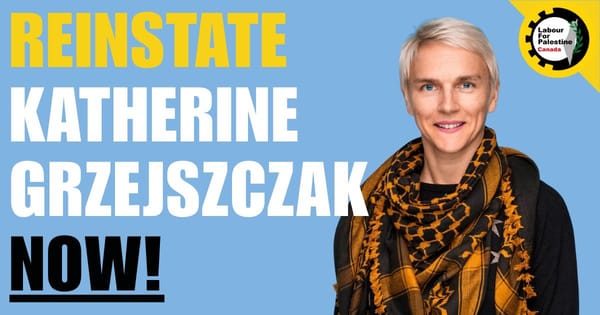
Republican politicians and business leaders have been griping recently about a supposed “labour shortage” brought on by over-generous unemployment benefits in the United States. We’ve also heard similar sentiments here in Canada throughout the pandemic.
Now as the Biden Administration’s vaccination programme ramps up and states open greater portions of their economies, many employers and their political lackeys are blaming the expansion of the supposed coronavirus nanny-state for “disincentivizing” labour.
Although academic studies show that this concern over unemployment benefits is mostly nonsense, it’s also not surprising.
A year ago when rational public health measures were first imposed to keep people out of non-essential workplaces, some Republican senators were already threatening to torpedo the first coronavirus stimulus bill over the proposed unemployment benefit increases. They were furious that some workers would earn more through unemployment benefits and stimulus support than they had in wages at their previous jobs.
At the time, Senator Bernie Sanders mocked the absurdity of Republicans worrying about workers who were “making 10 or 12 bucks a hour” receiving “a few bucks more” in unemployment payments, asking, “Oh my word, will the universe survive?”
Here we are, more than a year later, and many of the same figures on the right are still whining about supposed labour disincentives. With the U.S. federal minimum wage frozen at $7.25 per hour since 2009, and a tipped minimum wage of just $2.13 per hour, is it really that shocking that workers aren’t clamouring to get back to workplaces that could still expose them to COVID-19? Even with higher state and local minimum wage rates in pockets throughout the U.S., the low-wage economy isn’t exactly “incentivizing” a return to work either.
In Canada, faux-concern over COVID-19 support making employment unattractive is not dissimilar. Business associations, such as the Canadian Federation of Independent Business, were calling on the federal government to introduce restrictions on the Canada Emergency Response Benefit (CERB) last summer to ensure that this entirely necessary income support wouldn’t “distort” the labour market and harm “small business.”
The changes the Liberals made between the CERB and the Canada Recovery Benefit (CRB) assuaged some of the business lobby’s concerns. The CRB reduced benefit levels, created further eligibility restrictions and generally pushed people back into the labour market despite workers across the country facing new COVID-19 waves without access to paid sick days.
This time around, cries of labour shortage and excess social welfare seem to be largely coming from the usual suspects: low-wage employers, particularly those in the restaurant and food service industry.
Don’t fall for their narrative.
For starters, the latest jobs numbers in both the U.S. and Canada indicate that, although there have been noticeable labour market improvements since the beginning of the pandemic, there is still relatively slow job growth, elevated unemployment, and very little wage growth — all signs that there is no general labour shortage.
We might also question the degree to which restaurant and food services are experiencing an industry-specific labour shortage. As the U.S. Bureau of Labor Statistics reports, more than half of the job gains in April were in accommodation and food services. Additionally, new research from the University of California, San Francisco finds that food and agricultural workers saw the greatest rise in morbidity rates among occupations during the pandemic. In actuality, some of the people who used to work in these jobs are dead.
Therefore, what seems to be going on in food services is a simple case of workers making a rational decision. Mild job growth has not appreciably increased wages, and with the virus far from contained, workers who are financially able are staying away rather than exposing themselves to greater risk.
The second thing to note is that employers tend to make this same case about a labour shortage whenever the economy is rebounding from a recession. They did it following the 2008-09 financial crisis, when unemployment reached above double-digits and yet the U.S. government didn’t significantly enhance unemployment benefits.
Economic downturns — whether the result of regular capitalist crises or imposed by something like a pandemic — do more than simply generate unemployment. The severing of millions of employment relationships disrupts all kinds of social connections which make re-entering the labour market difficult for many workers.
Many employers tend to hire through networks. When scores of workers are pushed out of their jobs by an economic slowdown, hiring networks are also severed. Employers seeking to hire new labour at the beginning of a recovery are frequently reluctant to invest in training new workers — they’d prefer that the state or workers pay this cost. Additionally, displaced workers may use the period of job loss to upgrade skills, move, switch careers or make other life changes that would see them leave their pre-recession industries or jobs.
What appears as a “labour shortage” is sometimes just employers not liking the “options” on offer and refusing to pay the price of attracting or training new workers — in this case, crying about it in the media and hoping that the government will tighten the screws enough to coerce people back to work.
There are also plenty of factors that determine peoples’ ability to enter (or re-enter) the labour market. As has been especially clear during this pandemic-induced slowdown, the economy also depends on care work. With many schools and daycares closed or employees from these workplaces still at home, it’s equally tough for others to return to paid work. We know that the costs of COVID-19 have been borne disproportionately by working women; the unevenness of the post-pandemic economy looks like it too will be skewed by gender.
Rather than over-generous benefits keeping workers at home, it is often in fact the lack of adequate social support — principally the absence of a comprehensive national child care program — that excludes people from paid employment.
Yet, in much popular discourse somehow unemployment — or employers unable to find staff — is the fault of workers. Even when supposed labour shortage and high unemployment appear together, employers and right-wing politicians blame workers.
Of course, employers could simply raise wages. Aren’t economists always talking about supply and demand magically intersecting and determining prices? Clearly the price of labour is too low if you can’t fill vacancies!
But doing this, we are informed, would actually be a market distortion because it is those pesky income support programs that are the real source of the problem. As Senator Mitch McConnell put it last year, stimulus checks and extended unemployment benefits might make it “more advantageous to stay home…than [to] go back to work.”
What’s really at issue here is right-wing opposition to any state intervention that increases the bargaining power of the working class. Rhetoric about ensuring a “free” labour market and cutting back on state support is actually about restoring the power of bosses to call the shots.
We are treated to a variation on this same theme every time there is a proposed increase to the minimum wage. The coalition of small business defenders (which curiously includes many multinational corporations and franchises, where a large plurality of minimum wage employees actually work) informs us that raising the wage floor will result in a catastrophic wave of job loss. Then, some section of the media picks this up, despite the overwhelming evidence that the unemployment effects of gradual minimum wage increases are mild to non-existent.
Interestingly, there was a time when the left embraced the idea that using legislation to raise wages and minimum working conditions would drive bad bosses and unproductive firms out of business. As University of Iowa law professor Marc Linder’s compelling research shows, part of the rationale for minimum wage and standards legislation in the U.S. was to force so-called “chislers” (basically sweatshops) out of business. As progressive lawmakers argued, such firms were generating unfair competition through poverty wages and inhumane working conditions, and then passing the social costs of low wages onto everyone else.
Not only that, using legislation to put low-wage “chislers” out of business, proponents of a high minimum wage believed, had broader macroeconomic significance as well. Artificially low wages were a drag on productivity and held back investment and job growth. High labour standards were meant to fit together with a broader industry policy that directed investment to high productivity industries. Although North America never saw a high level of state intervention or coordination, some New Deal policy-makers in the U.S. nevertheless did understand that legislating greater worker power could also improve economic growth by pressuring employers to invest.
We should be forthright with a similar message today. We aren’t restricted to the low-wage, low-growth, “Open for Business” economy that the business lobby and their political representatives advocate.
The right-wing presentation of “the labour market” — and how much control we have over its design — has no basis in reality.
A livable minimum wage and a robust system of income supports for those currently not in paid employment aren’t distortions of some pure and pristine labour market; they are the basic social infrastructure that should be a prerequisite for any humane economy.
We can force governments to increase minimum wages and working conditions, make it easier to form unions, and provide a suite of welfare state supports — as well as create well-paying public sector jobs. We aren’t beholden to capitalists and the petty tyrants of small business to do this for us.
Workers aren’t “lazy” for declining to wait tables and stock shelves for minimum wage. They rightly want, and deserve, something better.






